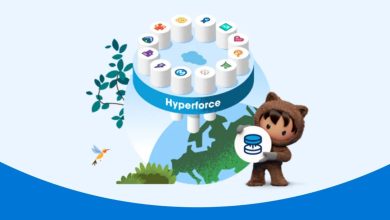
There are many reasons why object storage delivers business and technical benefits to companies and organizations. This new type of storage accommodates unpredictable data growth of unstructured data from unexpected sources. Object storage is perfect for mobile access and file sharing, and it acts as an active archive, keeping data alive even after it has been moved to the archive platform.
From the perspective of Hitachi Data Systems, the big return organizations see when they invest in this technology is a solution to the age-old issue of ever-expanding backup windows.
Backup to tape is not a “hot” technology, and it certainly doesn’t grab the headlines alongside more exciting trends like flash, cloud and object storage. However, it is still carried out by many IT departments all over the region. Most large companies have backup administrators, and to this day the task of backup remains one of the most difficult to maintain. Backups often incur errors, and the length of time a backup takes only ever gets longer.
The enormous growth of unstructured data and media-rich data in the business environment has added to this age-old problem. When stored using traditional methods, the only way to protect this rapidly expanding data is to back it up. However, doing so causes two fundamental problems: Firstly, as your data grows, your backups get longer – to the point of interrupting business productivity in peak times; and secondly, you start to back up static data more often than you should.
In a world where the profile of the data we create and store has changed, object storage solves the backup headache.
It’s not just about backup window. Cost is a concern as well, even though tape is still arguably the cheapest storage media available: The total cost of backing up a gigabyte of data is estimated to be double that of storing that same gigabyte of data on primary storage.
HDS understands that the backup use case for an object store is highly valuable for many organizations. As such, we have built functionality into our own offering that specifically addresses backup windows and efficiencies.
The key areas that object storage addresses are:
The active archive. Backup has long been used for long-term archiving. In effect, it was the graveyard for data, with static, rarely used data moved to an archive on offline tape and often stored remotely. Object storage provides the archive capability but with no special tools or software required to track, move or access the data. Retrieval is quick, and data doesn’t have to be completely static: It can still be updated. Resilience is also built in with redundant copies of data being stored across the object storage itself.
Data compression and deduplication. As data is moved into the object store, it is compared to other data that has been saved previously. Duplicated or unneeded data is eliminated or compressed, saving space and reducing the amount of data that needs to be replicated for redundancy. This rivals the supposed cost of moving data to tape and reduces the amount of data that needs to be included in scheduled backups.
“Write once, read many” (WORM) capability. Object storage from HDS provides a level of data integrity that is usually in the realm of backup. The inbuilt redundancy combined with the resilience implicit in object storage allows another class of data to be moved out of the traditional backup path and moved to object storage instead. To have WORM capability, combined with instant retrieval of data that is always available, is a massive benefit, compared to warm standby or off-site storage of tape. And object storage’s backup-based approach to archiving ensures data integrity.
Retention, which becomes simple. Backup has long been the way to ensure data retention requirements and regulations are met. However, as with most things regarding backup, retention can be resource-intensive, require skills in third-party applications, and be found not always flexible in administering different retention policies for different data. Object storage makes retention incredibly easy to achieve, enabling a retention period to be set for any individual objects or groups of objects. This use case removes another large identifiable data type out of the backup path.
Object Storage From Hitachi
Hitachi Content Platform provides the features that people look for in a backup solution and a whole lot more. Archived data remains live and searchable forever. Archived data can still be amended. Data can be retained and versioned never requiring any backup to take place. Redundancy is built in with replication as part of the overall architecture, but savings are materialized with data reduction technology.
These capabilities hit nearly every backup use case, with extra functions that keep your data active in a way that backup never could. The requirement for specialist backup skills diminishes and, most important of all, every piece of data you move to your object store reduces the backup window in two ways. It moves data out of your existing backup path, and it does so by moving it to a platform that does not require backup at all.




